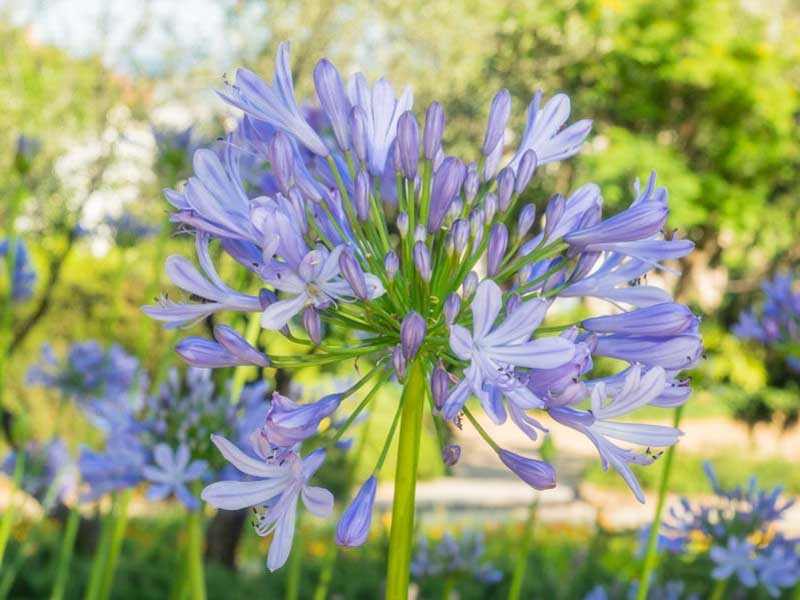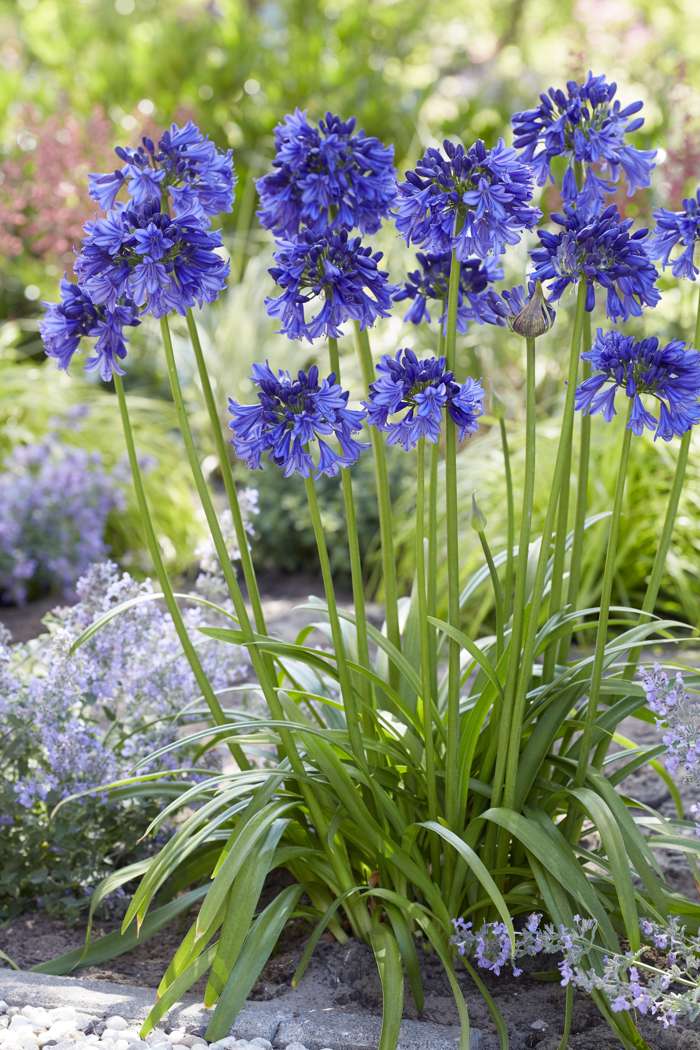Growing Agapanthus: A Total Guide to Beautiful Blooms
Grasping the Art of Agapanthus Treatment: Crucial Actions for Healthy And Balanced Development and Lively Flowers
In the realm of cultivation, the farming of agapanthus stands as a gratifying undertaking for those that look for to nurture these sophisticated blooming plants. From selecting the best range to understanding pruning strategies, the trip in the direction of growing flourishing agapanthus plants is multifaceted and holds the key to opening the complete capacity of these agricultural treasures.

Choosing the Right Agapanthus Selection

When selecting the best Agapanthus selection for your yard, take into consideration aspects such as climate viability, bloom shade, and growth habit. Furthermore, take into consideration the climate in your area to ensure the Agapanthus variety you choose can flourish in your specific conditions. Understanding the development habit of various Agapanthus ranges is important for appropriate placement within your garden.
Ideal Planting Problems
Thinking about the optimal ecological needs is necessary for successful Agapanthus farming. Agapanthus flourishes in well-draining dirt with a somewhat acidic to neutral pH degree. When planting, select a location that receives complete sunshine to partial shade. In hotter environments, offering some mid-day shade can protect against scorching of the fallen leaves. Agapanthus plants are sensitive to chilly temperatures and ought to be protected from frost throughout cold weather.
To guarantee healthy growth and dynamic blossoms, plant Agapanthus light bulbs at a deepness of regarding 2-4 inches and room them 8-12 inches apart. Mulching around the base of the plants aids keep moisture and reduces weed development.
Watering and Feeding Tips
Keeping appropriate moisture degrees and supplying important nutrients are key components in the care routine for Agapanthus plants. When it comes to sprinkling Agapanthus, it is essential to strike an equilibrium. These plants choose consistently wet soil yet are vulnerable to root rot if overwatered.
Fertilizing Agapanthus is necessary for promoting healthy development and respected blooms. Apply a well balanced plant food, such as a 10-10-10 formula, in the early spring as brand-new development emerges. By complying with these watering and feeding tips, you can ensure your Agapanthus plants prosper and generate vivid, durable blossoms.
Pruning Strategies for Agapanthus
Trimming Agapanthus plants at the ideal times and with correct strategies is vital for maintaining their health and promoting optimal development and blooming. The suitable time to prune Agapanthus is in late winter season or early springtime before brand-new growth emerges. Beginning by getting rid of any dead or yellowing leaves near the base of the plant. Cut them as short as feasible without harming the arising shoots.
Deadheading spent flowers can also redirect Click Here the plant's power into creating even more flowers rather than establishing seeds. If you desire to accumulate seeds for proliferation, leave some blossoms to mature and dry on the plant.
Bear in mind to utilize clean, sharp tools to make specific cuts and minimize the danger of introducing conditions. Agapanthus. Routine pruning will certainly aid maintain your Agapanthus looking healthy and cool while ensuring a plentiful display screen of attractive blooms
Dealing With Usual Insects and Diseases
After making certain appropriate pruning strategies for Agapanthus, it is important to address typical pests and conditions that can impact the wellness and vitality of these plants. Agapanthus plants are usually sturdy but can still drop victim to specific issues. One typical pest that impacts Agapanthus is the Agapanthus gall midge. This little, orange fly lays its eggs in the foliage, bring about distorted development Read Full Article and blossom buds that stop working to open up. To combat this parasite, prune and ruin any afflicted plant components and consider making use of insecticidal soap.
One more common problem is fungal leaf area, which provides as dark sores on the fallen leaves. To stop fungal conditions, guarantee excellent air circulation around the plants, avoid overhead watering, and get rid of any Web Site infected leaves without delay. In addition, Agapanthus plants can struggle with root rot if they are grown in inadequately draining soil. To avoid this, plant Agapanthus in well-draining dirt and stay clear of overwatering. By being watchful and taking prompt action against diseases and parasites, you can assist your Agapanthus plants prosper and produce lively blooms.

Final Thought
To conclude, mastering the art of agapanthus care entails selecting the appropriate range, supplying perfect growing conditions, proper watering and feeding, appropriate pruning techniques, and resolving common insects and illness. By following these vital steps, you can make sure healthy and balanced growth and dynamic blossoms for your agapanthus plants. Keep in mind to regularly keep an eye on and preserve your plants to promote their total well-being and long life.
To make certain healthy and balanced growth and lively blossoms, plant Agapanthus bulbs at a deepness of regarding 2-4 inches and room them 8-12 inches apart. By complying with these watering and feeding tips, you can guarantee your Agapanthus plants thrive and generate vibrant, durable blooms.
One usual pest that affects Agapanthus is the Agapanthus gall midge. In addition, Agapanthus plants can suffer from root rot if they are planted in improperly draining pipes dirt. By complying with these important actions, you can make sure healthy and balanced growth and vivid flowers for your agapanthus plants.